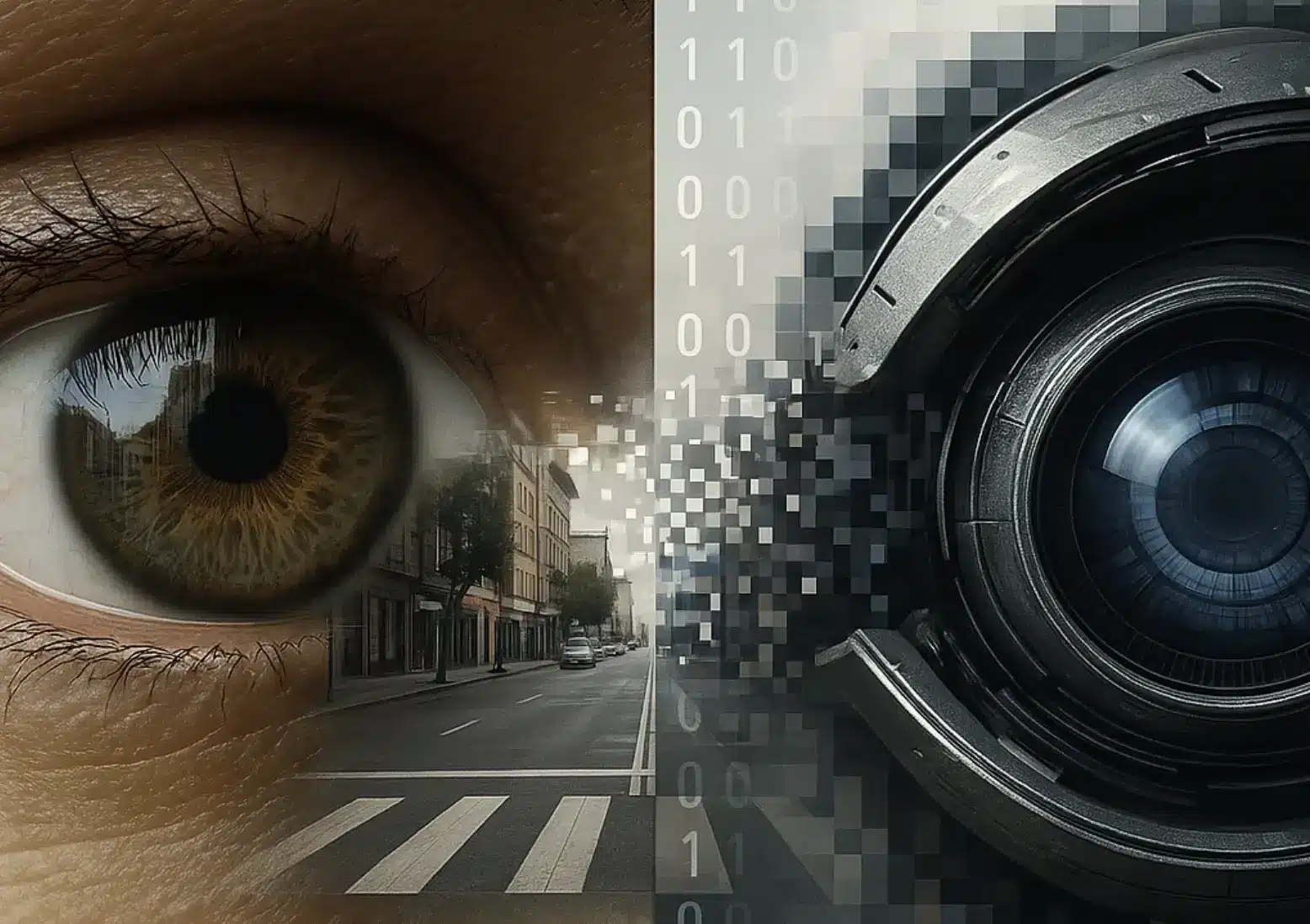Considered one of the most transformational technologies in the last decade, computer vision is the field of artificial intelligence where computers can interpret and act on visual data. From self-driving cars and visual AI gun detection to medical diagnostics and research, its applications are transforming entire industries. This article will explain the basics of computer vision and highlight how it can be best used in a wide variety of real-world applications that impact our daily lives.
Key Insights
- Computer vision enables machines to interpret and understand visual data using algorithms and deep learning from existing CCTV and video surveillance technology.
- Use cases leveraging computer vision span across many markets, from security and healthcare to automotive and academia.
- At the heart of computer vision systems are deep learning models such as Convolutional Neural Networks (CNNs) and real-time object detection. These are used to process data efficiently and recognize objects accurately.
- While computer vision has driven the development of many innovative technologies, including life-saving capabilities such as visual AI gun detection, there are still ethical concerns and data privacy issues that need to be addressed.
Understanding Computer Vision
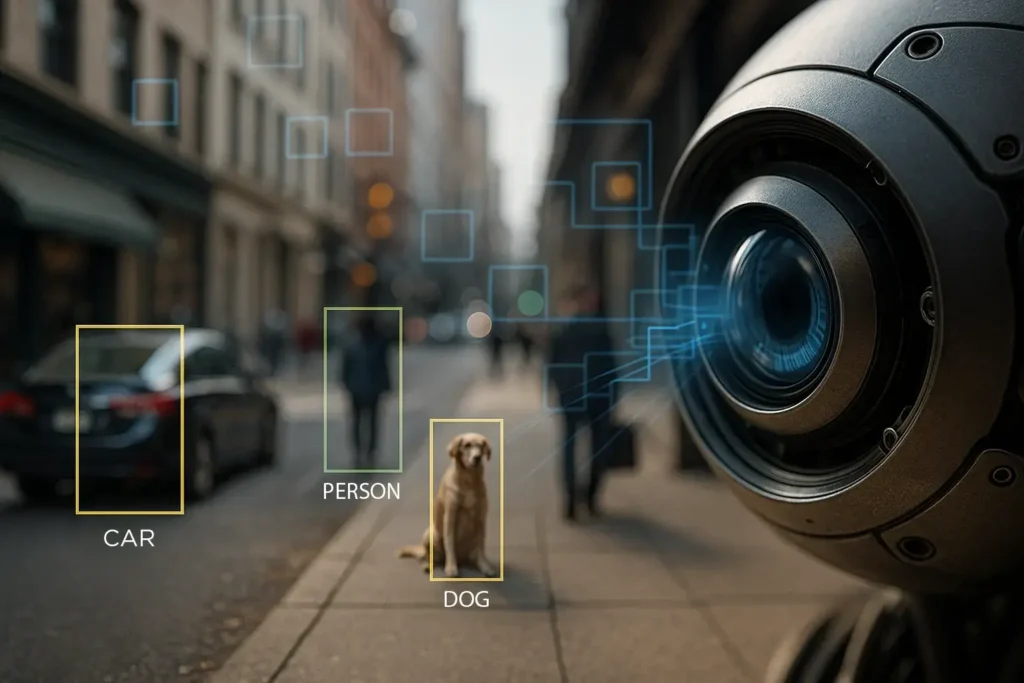
The development of computer vision began well before deep learning, relying initially on traditional image processing techniques and manually designed algorithms. However, therise of deep learning significantly accelerated its progress and capabilities. Computer vision falls under the broader category of artificial intelligence (AI), enabling machines to read and extract information from images and videos. Like human vision, it uses cameras and algorithms to interpret visual data, allowing systems to understand and respond to their environment. Unlike human sight, however, computer vision relies on digital components and mathematical models to capture, process, and analyze visual information with precision and speed.
Computer vision mimics human visual perception, allowing machines to interpret and act on visual data. It can recognize patterns, identify objects and make decisions based on the visual input it receives. Deep learning has advanced our understanding and interpretation of visual data, so computer vision applications are now more accurate and efficient.
The ability of machines to see and understand visual data opens up a wide range of possibilities across many industries. From security systems that can identify people to autonomous vehicles that can navigate complex environments, computer vision is changing the way we live and interact with technology.
How Computer Vision Works
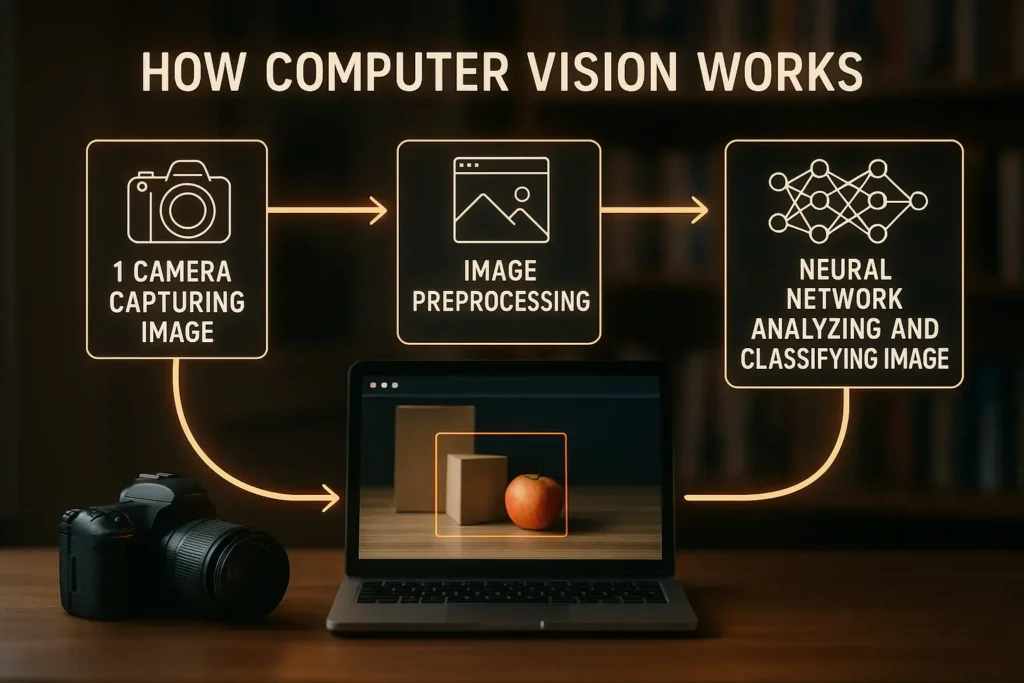
In a typical computer vision application, the process flow includes the following:
- Image capture: Visual data is received from cameras or sensors.
- Preprocessing: Raw data is cleaned and normalized so the images are ready for analysis.
- Analysis: Large amounts of visual data is analyzed to find patterns and learn to recognize objects.
Machine learning and neural networks are the magic behind computer vision’s success. They analyze labeled data to learn patterns and then make predictions on new input. The more images they process, the more accurate the predictions become. This is also where feature extraction becomes important because it helps identify patterns in all the data.
Key techniques and developments in computer vision include:
- Semantic segmentation, which classifies every pixel in an image and is crucial for applications requiring precise visual detail.
- The deep learning revolution from the late 2000s to the 2010s, featuring CNN architectures such as AlexNet and ResNet, transformed image classification.
- Techniques from the 2010s onward, such as transfer learning and Generative Adversarial Networks (GANs), that further enhanced computer vision capabilities.
All of these advancements are enabling real-time decision-making across multiple industries, such as healthcare and autonomous driving.
The Innovations Behind Computer Vision Systems
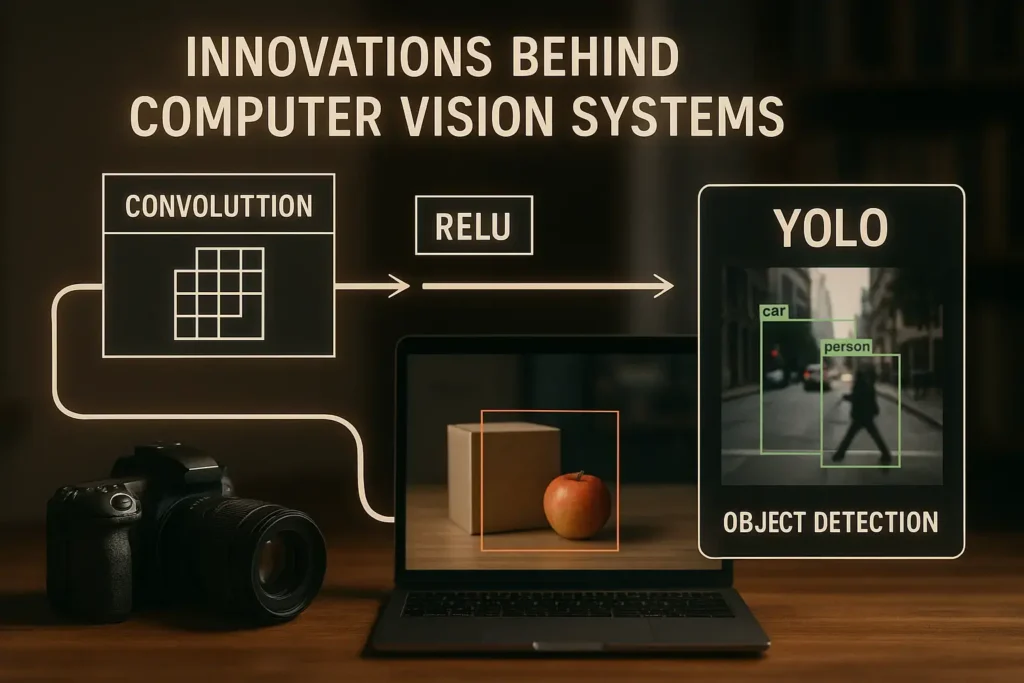
Computer vision is built on several key innovations that work together to process and analyze visual data. Deep learning models, specifically Convolutional Neural Networks (CNNs), are the bread and butter of image processing. These models have made image recognition possible by breaking down the images into pixels and learning to recognize patterns. Within these networks, ReLU (Rectified Linear Unit) plays a crucial role as an activation function, introducing non-linearity after each convolution operation. This enables the model to learn complex visual features and enhances training efficiency by allowing gradients to flow more effectively.
Model optimization is another key innovation that has influenced computer vision. This is a technique that improves accuracy and reduces the need for a significant amount of time training the data, making computer vision applications more efficient and scalable. By leveraging a technology known as feature extraction, computer vision can detect patterns in images, which helps it recognize objects and their characteristics.
One of the most popular real-time object detection algorithms used in computer vision is known as YOLO (You Only Look Once), which can detect multiple objects in one image and detect them at record speed. This capability is extremely useful in dynamic environments such as self-driving cars, where decisions need to be made quickly, or the results can be fatal. Computer vision systems also rely on large datasets to train models, so the accuracy of image recognition, object identification and object classification is continually improved over time.
Core Techniques in Computer Vision
The effectiveness of computer vision technology hinges on several core techniques that provide meaningful insights. This includes image processing, feature extraction and deep learning models. These techniques are essential for processing, analyzing and interpreting video data and visual data.
Image Processing
This technique is fundamental for manipulating digital images to improve quality or extract useful information. A variety of methods are used, such as image enhancement that improves the visual quality of the image and highlights any important features it may have. Noise reduction techniques are also crucial during image processing as they can remove unwanted noise while still preserving important details in the image. In medical imaging, techniques such as image segmentation may also help isolate specific areas in scans for detailed examination, which further aids in accurate diagnoses. All of these methods are integral to applications where precision and clarity are paramount, such as quality control and industrial automation.
Feature Extraction
This critical step in computer vision involves identifying patterns and defining objects within an image. Techniques such as edge detection are used to identify significant changes in intensity or color and to indicate object boundaries. Corner and interest point detection are also used to pinpoint unique features in an image, which can then be recognized across different views and transformations. Typical image processing techniques used in feature extraction include:
- Image segmentation: partitioning an image into distinct regions to enable detailed analysis of specific areas.
- Object detection: identifying and locating objects within an image, commonly by drawing boxes around these objects.
- Feature descriptors: generating a compact representation of local image regions around key points and facilitating object recognition and classification.
Deep Learning Models
Models such as Convolutional Neural Networks (CNNs) are pivotal in analyzing images by breaking them down into pixels and tagging them for prediction. These models have transformed the computer vision field by effectively recognizing patterns in images. Another approach used in deep learning models is known as Vision Transformers (ViT), which processes images using self-attention mechanisms. These advancements in deep learning techniques have significantly enhanced the capabilities of computer vision systems, enabling them to tackle complex visual tasks with greater accuracy and efficiency.
Applications of Computer Vision Technology
Computer vision is changing the world by allowing machines to see and automate tasks, making them more efficient and accurate. This capability is now being widely used in industries such as healthcare, retail, manufacturing, security, and automotive.
In the following three sections, we will highlight how computer vision is solving real-world problems by improving operational efficiency in security systems, medical imaging and autonomous vehicles.
Security Systems
Computer vision enables facial recognition in security systems, and by automating the identification of people, these systems can increase their monitoring capacity. In addition, the use of AI-based video analytics systems, such as visual AI gun detection, can detect unusual behavior or threats in real time, making security surveillance much more effective and accurate. Systems such as Omnilert Gun Detect analyze video feed from cameras already installed at a facility and can instantly detect a firearm the moment it is brandished. The technology can also initiate a comprehensive response once a threat has been verified, which can include calling the police, locking doors, sounding alarms, sending alerts, and more.
Omnilert’s AI Gun Detection has become a game-changer for preventing and mitigating active shooting incidents, saving lives. This technology is now being used across many industries such as education, healthcare, retail, finance, entertainment and government, just to name a few and is an excellent solution for any gun free zone.
Medical Imaging
Computer vision has been instrumental in medical imaging applications by speeding up and improving disease detection. This helps doctors diagnose much more quickly and accurately. When used for these applications, deep learning models automatically analyze images to extract health metrics and then provide the information and diagnosis to the doctors so they can make their own informed decisions.
Computer vision is also used in hospitals to ensure hygiene compliance, monitor patients’ vital signs during surgeries and to assist in robotic surgery. The use of this technology in the medical field is still new, and there is much more potential for it to grow and expand in providing life-saving assistance.
Autonomous Vehicles
Computer vision is key to self-driving cars because it can interpret visual data from what it sees, and it can make decisions quickly, which is critical to avoid accidents. As real-time video is analyzed, it can be used to detect pedestrians, traffic signs and other obstacles, which leads to safer driving and fewer accidents. This technology can also provide real-time traffic monitoring of road conditions, making the ride not only safer but smoother.
Real-World Examples of Computer Vision

Computer vision is currently used in multiple industries to increase efficiency and accuracy, streamline processes, get better results and reduce operational costs. Below are a few use case examples showing its effectiveness:
Quality Control in Manufacturing
Computer vision can automate the inspection process to ensure product quality by identifying defects. It can also be used to monitor equipment for maintenance so that machines can be serviced before an unexpected downtime occurs. These functions, and more, can help manufacturers reduce operational costs, speed production and ensure the highest product quality.
Retail and Inventory Management
In retail, computer vision can track products in real-time so that stock can be optimized and waste is reduced. Amazon and Walmart use this technology to monitor their stock, predict shortages, streamline inventory management, and increase customer satisfaction. Computer vision also lets retailers analyze customer flow and customer behavior, so they can make data-driven decisions to improve the shopping experience and increase sales.
Augmented Reality
These AR applications rely heavily on computer vision to overlay digital content on the physical world to enhance user interaction with their environment. This allows systems to recognize and interpret the real world for seamless digital overlay, and one recent example is the Apple Vision Pro AR headset. This device is a mixed-reality headset capable of both virtual reality (VR) and augmented reality (AR). It can be used as a personal movie theater, VR gaming headset (for Apple Arcade) or virtual monitor for a Mac.
The Evolution of Computer Vision

While computer vision applications have only recently started to appear across many industries, the technology has actually been around since the late 1960s, with the perceptron model laying the foundation for neural networks. Then, in the 1970s and 1980s, the industry saw the emergence of edge detection and feature extraction algorithms such as the Canny edge detector and Hough transform.
It was in the 1980s to 1990s that the technology advanced enough to be capable of object recognition and scene understanding with algorithms like Cascade-Correlation neural networks and SIFT. And in the 2000s, we saw the rise of Support Vector Machines and the introduction of the Viola-Jones algorithm, which became the standard for real-time face detection.
Each of these innovations was important to the advanced computer vision systems we have today.
Privacy Concerns and Future Directions
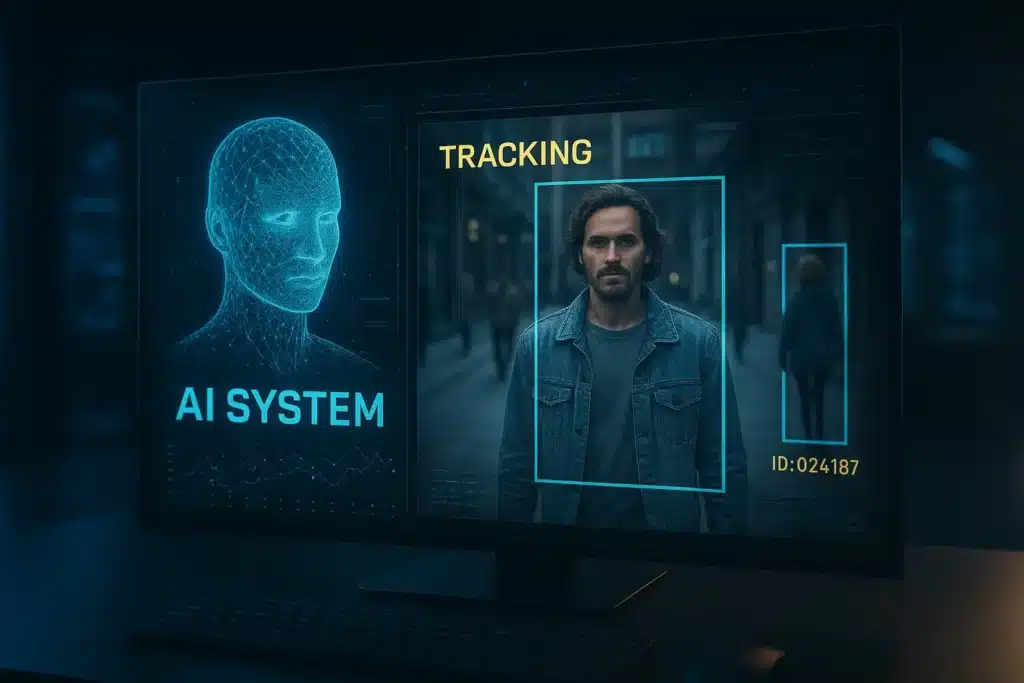
The advantages that computer vision can provide to a vast number of industries are remarkable. For example, when used in the medical field, it can lead to life-saving diagnoses and more accurate surgeries. However, with any technology, there are issues to work out, and the ones that are often discussed around computer vision are privacy and consent. That is why companies that deploy computer vision should adhere to the following:
- A clear set of ethical principles that dictates the need for respect for human dignity and privacy.
- Informed consent and responsible data usage are required.
- Robust anonymization techniques to safeguard personal information while still permitting valuable data analysis.
As mentioned earlier, companies such as Omnilert have already addressed these concerns with their visual AI gun detection platform. When this technology is used in a school, for example, facial recognition is not used on any student or staff being monitored by a camera, and the video feed never leaves the premises, which makes the system one of the most privacy-friendly solutions compared to some that caputure faces, scan for behavior and other typess of monitoring that could be a violation of privacy. This system leverages existing cameras in the school to enable them to scan for guns and alert staff, first responders, and school resource officers.
Innovative solutions such as homomorphic encryption and secure federated learning are also currently being developed to enhance data privacy in computer vision. As these and other technologies come to fruition, it’s important for companies to have clear legal and ethical frameworks to ensure adherence to data protection laws and maintain public trust in computer vision technologies.
Computer Vision is the Future
Computer vision is changing the processes and potential of various industries with its ability to allow machines to analyze, interpret and act on visual data like never before. From core techniques such as image processing and feature extraction to security, healthcare and autonomous vehicles, the possibilities are endless and growing.
Moving forward, continuing to address ethical and data privacy concerns will be key to keeping the public’s trust and unlocking the full potential of this technology. The journey of computer vision is far from over and will bring even more solutions to real-world problems, transforming the way we live, work and play for many years ahead.
Frequently Asked Questions
What is computer vision?
Computer vision is a branch of artificial intelligence (AI) that allows computers to interpret and extract information from images and videos, simulating human visual perception. This technology aims to enhance the ability of machines to understand and analyze visual data effectively.
How does computer vision work?
Computer vision operates by capturing visual data and preprocessing it, followed by analyzing patterns and making predictions through machine learning and neural networks. This allows for the interpretation and understanding of visual information by computers.
What are the key technologies behind computer vision systems?
The key technologies at the heart of computer vision systems involve deep learning models such as CNNs, model optimization techniques, feature extraction methods and real-time object detection technologies. These elements work cohesively to enhance the system’s performance in visual recognition tasks.
What are some applications of computer vision?
Computer vision provides crucial applications for facial recognition in security systems, medical imaging for disease detection, navigation for autonomous vehicles, and augmented reality for enriching user experiences. These applications demonstrate the transformative potential of computer vision across many fields.
What are the future challenges for computer vision?
Future challenges for computer vision will involve tackling ethical concerns, ensuring data privacy and establishing comprehensive legal and ethical frameworks. These issues will be critical in guiding the responsible development of the technology.
